Subaru Levorg 1.6i GT Lineartronic
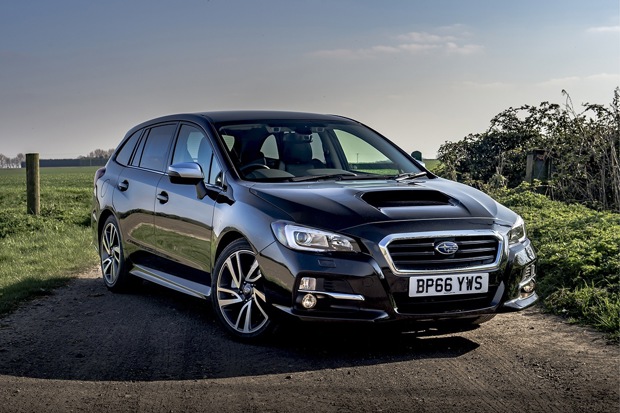
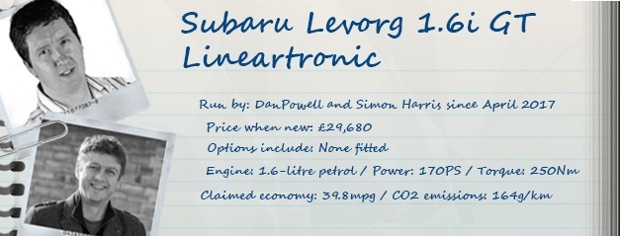
- Subaru Levorg joins the fleet
- How much boot space do you get with a Levorg?
- Sporty style that's lacking in substance
- Continental callings with the Levorg
- Snap, crack and pop goes the windscreen
- Surveying the estate
- MPG improvement gives fuel for thought
- Win on Sunday, sell on Monday?
- Transmission impossible
- Economy usurped by intelligence
- Tech-lovers' paradise
- Final chapter for enigmatic estate
Subaru Levorg joins the fleet
Dan swaps his compact and efficient Suzuki Baleno hatchback for the big and bold Subaru estate.
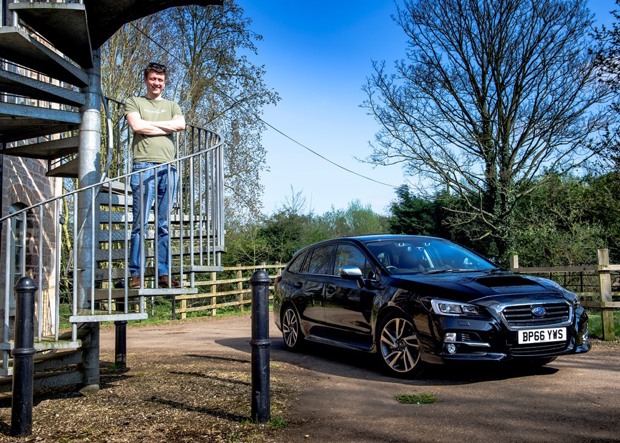
Date: 31 March 2017 | Current mileage: 424 | Claimed economy: 39.8mpg | Actual economy: 27.9mpg
"Subaru Levorg? What on earth is a Subaru Levorg?" said my girlfriend as I drove her to the supermarket in my new long termer, a Subaru Levorg. To be fair, it’s a valid comment, because the Levorg (along with Subarus in general) are something of a rarity on our roads.
Indeed, according to the Society of Motor Manufacturers and Traders (the industry body that counts up the number of new cars sold in the UK), Subaru shifted less than 4000 cars in 2016, which is a monumental distance behind the 300,000 vehicles that Ford and Vauxhall each sold over the same 12 month period. Cleary, Subaru has some catching up to do…and that’s where the Levorg comes in.
You see, the Levorg is here to put Subaru back on the automotive map, with an emphasis on family friendly practicality and flexibility. What’s more, from the outside at least, the Levorg estate looks the part. Not only does it sit lower to the road than your standard family wardrobe on wheels - with a mere 135mm ground clearance - but it also adds some sporty style, with sweptback headlights, clamshell bonnet, rear spoiler and Subaru's trademark bonnet bulge. This provides an aggressive look that wouldn't be amiss from any of its rally-bred race machines from the 1990s.
However, despite the shouty front end, this is not a fast car. In fact, it's not even a quick one. For sure, it's powered by a turbocharged 1.6-litre flat four boxer petrol engine, with 170PS, but it doesn't feel like a match for a Ford Focus ST. Or even the Skoda Octavia Scout for that matter, with the Levorg officially taking 8.9 seconds to cover 0-62mph.
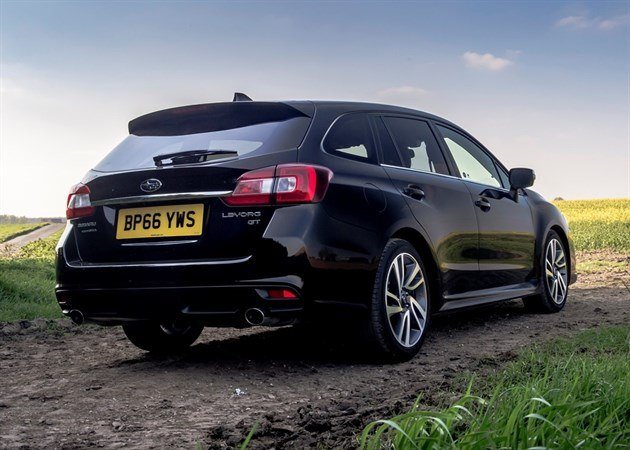
The Levorg is limited to GT trim. You also only get one engine choice - a turbocharged 1.6 petrol
Fuel economy is also an issue. Even by the official figures, the Levorg will return a pocket-squeezing 39.8mpg, which means it is less efficient than the estate versions of the Focus ST and Octavia vRS. That said, the Levorg is one of a kind, simply because no other manufacturer offers a petrol, 4x4 estate.
Now, why anyone would want a petrol four-wheel drive estate is up for debate, but with diesels being billed by the media as the beholder of all evil, it’s fair to say that petrol-power will be finding its way into a lot more four-wheel drive estates and crossovers. So in a sense, the Levorg is ahead of its time.
But what is the Levorg like to drive? Well, after just a few hundred miles, early impressions are positive; the Levorg is smooth and comfortable and I've already been impressed by its responsive handling and supple ride qualities. However, with claimed economy in the high 30s, I get the impression that I'll be getting to know my local petrol station rather well.
The Levorg is limited to just one trim level - GT - and the aforementioned 1.6-litre boxer engine. However, standard equipment levels are high and all cars get LED headlights, adaptive cruise control, navigation and leather seats. Over the next six months we'll find out if Levorg can justify its £29,689 list price.
How much boot space do you get with a Levorg?
Subaru's estate has plenty to offer, including a huge boot. But how does it compare to the competition?
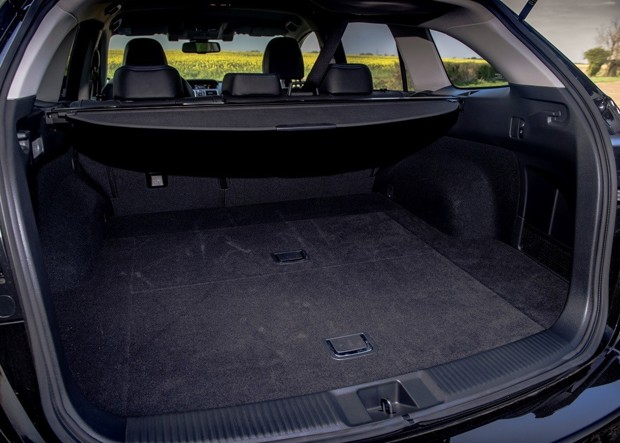
Date: 14 April 2017 | Current mileage: 1009 | Claimed economy: 39.8mpg | Actual economy: 30.6mpg
If you're in the market for a new family estate then it would be fair to say that storage will rank high on your list of priorities. And on this front the Levorg provides mixed results, with its 522 litre boot lagging behind the estate versions of the Skoda Octavia Scout (610) and SEAT Leon X-Perience (587). That said, none of the Levorg's rivals are offered with a petrol engine and four-wheel drive, but there's no hiding the fact that there are more practical 4x4 estates on the market.
While the boot isn't as large as its rivals, it is suitable enough for my everyday needs. Over the past month I've managed to fit large suitcases and the weekly shop in without issue, although the car's 1490mm height makes its painfully easy to bang your head on the tailgate when lifting things out of the boot.
Indeed, over the last few weeks, I've hit my head four times on the raised tailgate, the problem lying with the fact that the Levorg sits closer to the road than a typical estate. As a result, with the boot open, it's all too easy for six footers - like myself - to catch their heads on the plastic trim or the edge of the boot lid. And trust me, it hurts...
In addition to the bumps on the head, I've also noticed a few indentations in my wallet, with the Levorg returning 30.6mpg. This makes it a costly thing to run on my 30-odd mile commute. I've tried using the active cruise control, but the gains in efficiency have been relatively small. I'm, hoping things improve as the turbocharged 1.6-litre engine becomes run-in.
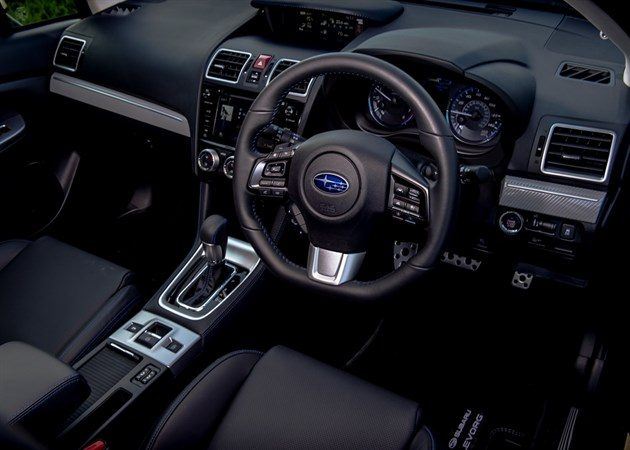
The Levorg is well-equipped as standard, with DAB audio, leather seats and cruise control
Running costs aside, the Levorg is an excellent motorway cruiser. The 1.6-litre engine and CVT 'box might be sluggish when attempting to leave a busy junction, but the transmission and turbocharged engine find excellent symmetry once you get above 50mph. This means it is great for the motorway, while the four-wheel drive provides plenty of grip when heading off into the twisty stuff.
It's a real pity that the CVT 'box is prone to getting bogged down in the low revs, because the Levorg's handling is really good. The four-wheel drive system is packed with grip and the electric steering also has just the right level of feedback. Sadly, when pressed, CVT transmission struggles to push out of a tight bend, with a slow and treacle-like response.
Given its attractive and sporty exterior, the lacklustre performance is providing a bit of a bugbear. I accept that the Levorg isn't built for performance, but I really was hoping for much more from its 170PS petrol engine. Sadly, the transmission simply isn't up to the task of transferring that power to the wheels.
On the flipside, the Levorg is well-equipped. The GT trim has everything you could need, with leather seats, touchscreen navigation and eight-way power adjustable driver's seat. This means it is easy to get comfortable, with the sports seats providing plenty of back and leg support. There is also lots of space in the back, which means you can transport four adults without complaints.
Sporty style that's lacking in substance
The Subaru Levorg looks great. Sadly its performance is not as impressive, as Dan explains.

Date: 28 April 2017 | Current mileage: 1740 | Claimed economy: 39.8mpg | Actual economy: 31.2mpg
As a yoof, in mid-90s’ Essex, I grew up with Subaru being one of the coolest brands around. Back then, the Impreza was the car of the moment. And Colin McRae was the fastest rally driver on the planet. In fact, I'm pretty sure that every kid at my school harboured dreams of growing up to be the next world rally champion. And naturally, all of them wanted to do it in a Subaru.
Given the Levorg’s sporty styling, I have to say that I get a few pangs of those heady teenage years whenever I look at it. The lowered, sleek styling and aggressive front end give it that 1990s' rally look. However, while its a fine looking thing to look at, the youthful optimism of the 1990s turns into middle-aged scepticism of the 2010s when you're behind the wheel. Clearly this is not a car Colin McRae would be able to win a World Rally Championship in.
As pointed out in previous reports, the Levorg - on paper - is potent with its turbocharged 1.6-litre petrol engine developing 170PS. Sadly, with the CVT gearbox behind it, the performance is all huff and no puff. Now the lack of sub-50mph grunt wouldn’t be so much of an issue if the Levorg was efficient, but it isn't. In fact, with an average of 31.2mpg, it is probably one of the worst family estate cars I've driven for fuel economy.
This means the Levorg fits into a strange category where it doesn't excel in any particular area. Yes, it's good on the motorway, yes it's large and comfortable, but so are all of the other family estates on the market. The only difference here is that the Subaru will cost more to run, while being considerably slower than the Skoda Octavia Scout 2.0TDI (184PS) and less efficient than the Ford Focus ST 2.0 EcoBoost 250PS.

The Subaru Levorg is a tidy looking car, but it struggles to back up its sporty visuals with meaningful performance
The lack of economy is made all the more frustrating by the fact that the Levorg is so smooth on the motorway. From 0-50mph, the engine and CVT transmission tug and pull at each other, with wobbly hesitancy. Yet, reach 51mph, and you'll find that they strike a sudden bond that gives free flowing performance all the way to 70mph. It's a pity that this isn't the case across the entire spectrum, because I might be able to overlook the Levorg's thirsty nature if this was the case.
Road and engine noise also vanish at 51mph, providing a wonderfully quiet and smooth experience to waft over the motorway miles. The experience is only ruined when you glance at the trip computer and realise that the Levorg returns the typical motorway economy of a Porsche 911.
On the subject of long drives, I've found an appreciation for the interior of the Levorg. Unlike some Japanese cars, which are covered with a cheap layer of hard plastic, the Subaru is carpeted in soft-touch materials and high quality leathers. The touchscreen infotainment is also easy to use, while the interior mood lighting bathes the cabin in a welcoming blue hue at night.
The front leather sports seats are also comfy, with broad side boosters that providing a hugging sensation. This means you can spend two or three hours behind the wheel, without feeling cramp or muscle ache. Just a pity you feel a sharp pain in the wallet department every time you stop to refill...
Continental callings with the Levorg
Dan heads to mainland Europe for a weekend to see how the Levorg performs as holiday transport.
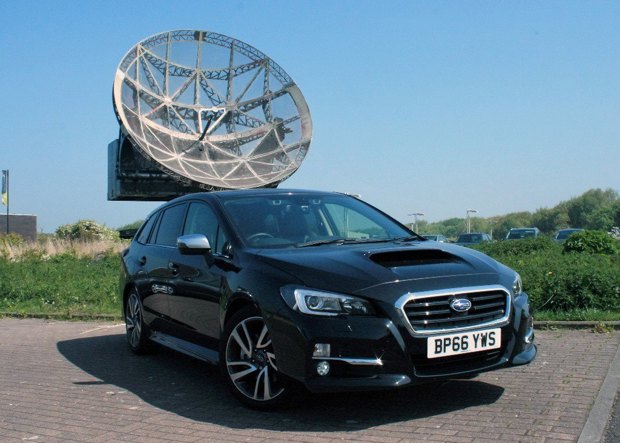
Date: 12 May 2017 | Current mileage: 2240 | Claimed economy: 39.8mpg | Actual economy: 32.1mpg
Regular readers will know that I enjoy a European road trip. Whether it be motor racing, weekends away or a cheeky day trip to France, I enjoy getting out and about when I'm not working. And, as always, I usually take my long termer with me to see how it doubles up as family transport. On this occasion I was heading to Belgium, on a 500 mile roundtrip from Cambridge to Ghent.
Being an estate, the Levorg's perfect for a trip away, with its 522-litre boot being large enough to hold four large suitcases. The spacious interior will also carry four equally large adults, although tall people in the front will need to move their seats forward as rear legroom isn’t quite as good as the Skoda Octavia Scout Estate.
The trip itself was pretty simple, with a dash down from Cambridge to Dover to catch the morning ferry over to Calais. Once in France, it was a gentle drive to the Belgium border and on to Ghent, via a brief visit to the Atlantikwall Museum, near Oostende (pictured above).
Being a bit of a history fan, I seldom pass up an opportunity to visit something of significance and the Atlantikwall is Belgium’s largest open air museum, housing historic WW2 bunkers, guns, radar stations and observation towers. If you like that sort of thing then it's well worth a visit. If not, you'd be better off motoring onwards to picturesque Ghent, where I spent the weekend.
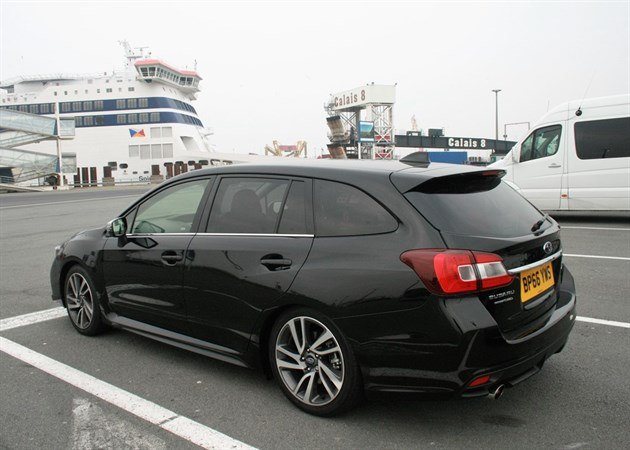
The Levorg proved itself on a recent trip to Belgium, although fuel economy remains disappointing
During the trip along the French and Belgium coast - on the A16 and E40, fact fans - I also managed to improve the fuel economy average. Albeit it slightly. Unlike some of its rivals, the Levorg gets adaptive cruise control as standard, which means - when active - the car automatically adjusts its speed to maintain a set distance from the car in front. This means you can set the speed to 70mph and relax a little as the car does the hard work. However, while the system cuts down on unnecessary acceleration and braking, it only managed a marginal increase in overall fuel economy from 31.2mpg to 32.1mpg.
Obviously, being an estate, the Levorg provided plenty of space for food, wine, gifts or anything else my passengers wanted to collect on their weekend away. What's more, owing to its low loading sill and wide boot opening, the Levorg makes it easy to load and unload. You can also stack it the roof, with the front headrests preventing anything from shifting forward toppling on to your passengers.
However, as usual, I still managed to bang my head a couple of times on the tailgate, whenever I loaded/unloaded the car. My passengers, when not laughing at me injuring myself, also took some time to praise the ride comfort and leather seats. Admittedly, the rear of the Levorg isn't the largest, but the deep cushioning of the leather gives the seats a soft affect that makes it easy to sink in and relax.
The navigation also got a full run through and, while it provided well-judged route guidance, with intelligent directions and clear instructions, I found the low positioning of the screen to a bit of a hindrance. The Levorg has a two-tier infotainment display, but for some reason the upper screen - positioned just below the windscreen - doesn't show navigation information.
Snap, crack and pop goes the windscreen
A small stone chip turns into a big problem as Dan's windscreen cracks up in the heat.
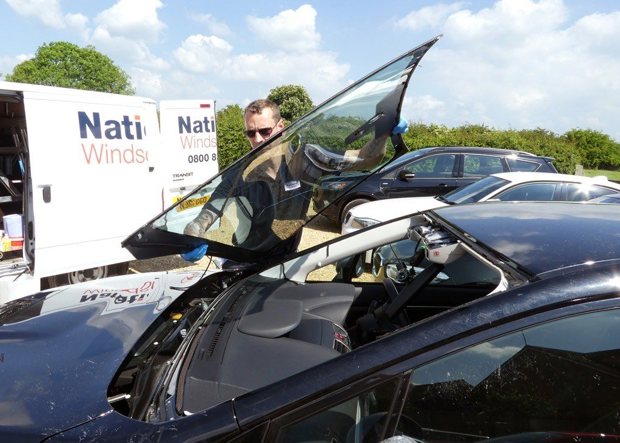
Date: 26 May 2017 | Current mileage: 2417 | Claimed economy: 39.8mpg | Actual economy: 32.4mpg
Chips. We've all had them. Sadly, in my case, the chip was not of tasty potato variety with salt, vinegar and a dab of tommy K. Instead the chip was the manifestation of a missing chunk of glass in the Levorg Windscreen.
The problem started on a Friday, as I left work, with a passing lorry kicking up a stone that then walloped the centre of the windscreen. The chip was tiny, so I dismissed it and carried on my way to enjoy summery weekend in Cambridge.
Fast forward to Monday morning, however, and that warm weekend weather had transformed the chip into a four inch vertical line up the centre of the windscreen. Clearly, baking away on my driveway over the weekend, the weather had softened the glass and accelerated the demise of the windscreen.
To make matters worse, as I set off for work on Monday, the crack had taken a life of its up, growing upwards of two more inches as I clipped a pot hole on the A14, before taking a right-hand turn. By the time I arrived at the office car park, the crack was pushing into the driver's side of the screen.
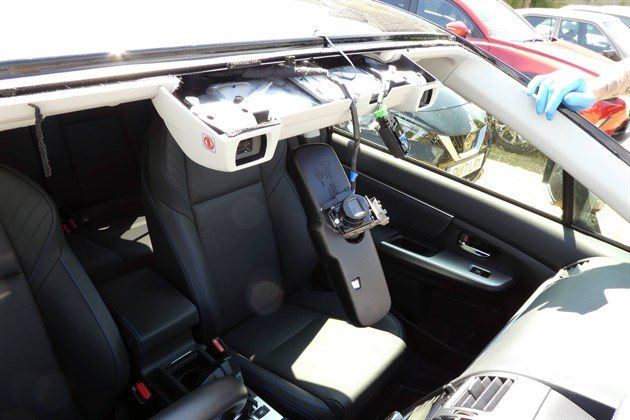
Thankfully the Levorg's EyeSight system isn't fixed to the windscreen; otherwise the Levorg could have been off the road for a full day to have its screen replaced
After a quick call to Subaru's preferred windscreen supplier - National Windscreens - I booked in the Levorg to have the screen replaced. Sadly I had to wait a week because the screen wasn't in stock. Thankfully, with a carpark full of vehicles on test, I was able to hop into a replacement car, but standard Subaru owners would not have been so fortunate.
The replacement work itself took less than an hour to complete. I also managed to get a closer look at the workings of the Levorg's EyeSight system, which uses cameras to monitor traffic for the adaptive cruise control and warn you if you wander outside your road lane. This safety tech isn't limited to Subaru though and it's becoming increasingly popular on all makes and models of cars in the UK.
However, while the safety benefits of safety cameras and radar are obvious, it could soon prevent roadside windscreen changes. According to the chap who replaced my car's windscreen, many of the radar-based systems need to be recalibrated when a new screen is fitted. This means taking them off the road , which is great for windscreen fitters in the winter months, but not so appealing for drivers.
Thankfully the Subaru's camera-based system had no such issues, with its dual lenses sitting behind the glass, which means I'm back on the road again. I've also managed to gain a marginal improvement in average fuel economy, although I remain pessimistic if I'll ever reach Subaru's claimed 39.8mpg.
Surveying the estate
The time has come for Dan to say goodbye to the Subaru and summarise his time with the thirsty estate.
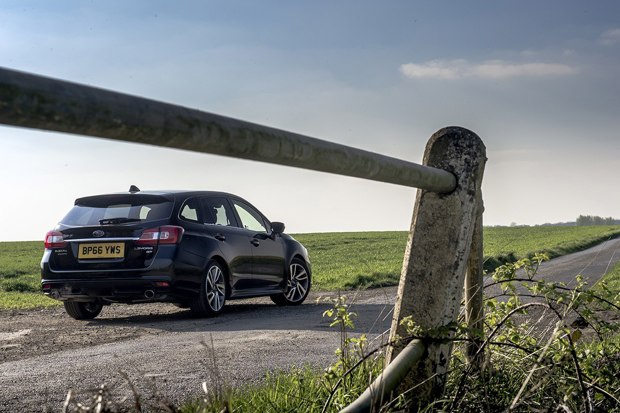
Date: 9 June 2017 | Current mileage: 2900 | Claimed economy: 39.8mpg | Actual economy: 32.4mpg
After three months and 3000 miles, my time with the Subaru Levorg is at an end. And as I hand over the keys to our company cars expert Simon Harris, it gives me an opportunity to sum up my time with the estate and consider whether I’d recommend it as a sensible family car.
First things first, the going points: the Levorg is a fine looking estate. Sporty, low slung and aggressive at the front, it carries the Subaru brand with aplomb. If I was a PR man, I’d probably wax lyrically about how it “embodies the brand’s DNA” or “encompasses the modernity of Subaru”. But in layman’s terms, it's a handsome car.
It's a comfortable thing to wallow away the miles in too. The interior is huge, comfortable and finished to a much higher standard, than you might expect from Subaru. The ride is good too, with the well-judged suspension soaking up speed bumps and pot holes without any drama. Likewise, there isn't anything in the way of body roll either, which means the Levorg has all bases covered when it comes to fulfilling the mantra of the family estate.
Sadly there are some issues that are too large to ignore, with the fuel economy (or lack of it) being the biggest problem when it comes to running a four-wheel drive petrol estate. Indeed, even by the official numbers (39.8mpg) this is a thirsty car, but in real world terms that figure is much closer to 30mpg, which makes long drives a rather costly experience.
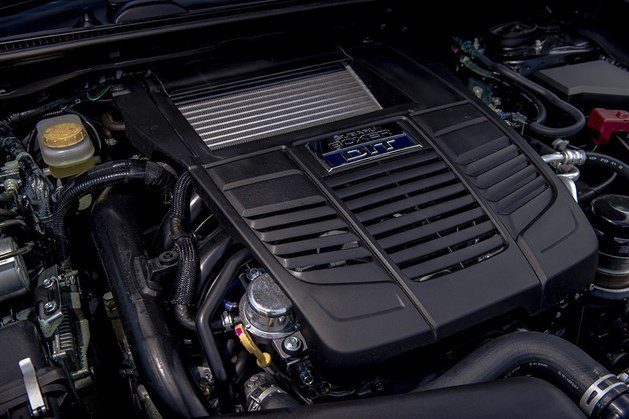
The Levorg's turbocharged 1.6-litre engine packs 170PS, but seldom lives up to its powerful billing
The Levorg is powered by a turbocharged 1.6-litre petrol engine, but the CVT transmission is a poor match and this produces sluggish performance that only picks up once you get above 50mph. As a result the Levorg is a fantastic motorway wagon, but dreadful for pulling away from a busy junction as it huffs and puffs.
And therein is the problem with the Levorg. Its dreadful economy figures and lack of meaningful performance make it a very difficult car to recommend, unless you desperately need a four-wheel drive family car with a petrol engine. However, given the choice of front-wheel drive cars, traction systems and winter tyres, I would struggle to pick the Subaru over any of its estate or crossover rivals.
For example, with £30,000, you could easily get a Peugeot 3008 in the range-topping GT trim with a 130PS 1.2-liter petrol engine and grip control. Not only will the French crossover cope with everything winter can throw its way, but it will also give you roughly the same amount of interior space and also return 50+ mpg according to the official figures. That mean you'll cover almost double the distance on a full tank of fuel than you would in the Levorg.
So, it's time to wave goodbye to Simon and the Levorg and say hello to my next car, the SsangYong Tivoli XLV , which I'll be running over the next three months. It also means swapping petrol for diesel, which will probably see my weekly fuel costs fall by a county mile now that I'm not running a petrol four-wheel drive.
MPG improvement gives fuel for thought
Have we been overstating the fuel consumption issue with the Subaru Levorg? Simon thinks so.
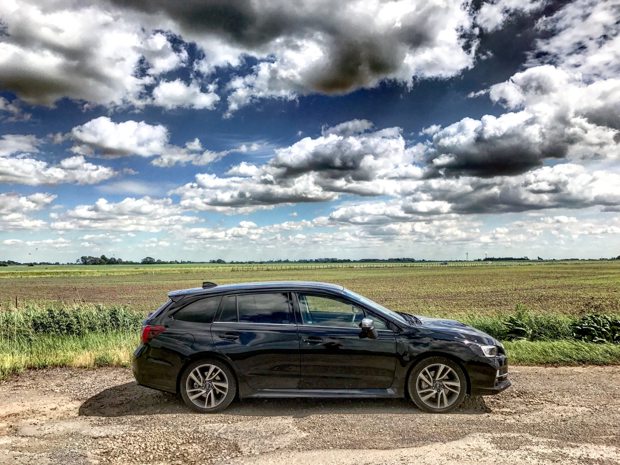
Date: 30 June 2017 | Current mileage 5530 | Claimed economy 39.8mpg | Actual economy 40.6mpg
This is my first update on the Subaru Levorg, and while not meaning to contradict Dan Powell, who obviously got to know the car a little better than me in the few months he was driving it compared to my few weeks, but so far I think he might be talking rubbish.
I took the key when the car had 4500 miles on the odometer, so still hardly what you’d call run in, and immediately saw an improvement in the fuel economy Dan had been achieving. An accurate calculation from an indicated 36.3mpg on one tank saw a measured 35.5mpg brim-to-brim, while the latest tank is currently showing a trip computer average of 41.7mpg over 420 miles – the reading calculated when refuelling was 40.6mpg for 47 litres consumed over that distance.
To be fair to Dan, he has been commuting in the car at times of peak traffic on notoriously congested roads. He perhaps should have been using the urban fuel economy figure of 33.2mpg as a benchmark for how he has been driving it. I work from home, and I’m based in the countryside where there’s little traffic.
I sometimes have to drive to Heathrow airport to fly to some far off place to drive a new car on a press launch, but I always allow myself plenty of time. It hasn’t been too difficult to see the trip computer head toward 40mpg, although maybe aiming to go higher was me trying to rub it in a little, and I look forward to debunking the speed (or lack of it) issue in a future update...
The foglights (left photo) are the daytime running lights on the Levorg, despite an LED headlight 'signature'.
One aspect of the Levorg that both Dan and I agree on is that it’s a great looking car. Riding low, and with a bonnet air intake and metal finishes on the grille, lower lights and door mirrors, it creates its own focus of attention.
But the lower light clusters incorporating indicators and front foglights are an area where I think Subaru has missed a trick. The Levorg, like all new cars, has daytime running lights. And even if it didn’t have LED headlamps, like many other mainstream and premium cars, it has an LED signature design in the headlamp unit.
The difference here is that whereas an Audi, Mercedes-Benz, Ford or Vauxhall would use the LED as its daytime running light, for some reason, unfathomable to me, the Levorg illuminates its foglights only. They perform exactly the same function but look far less cool.
You might think this is irrelevant, but word has it that Volvo decided to make its ‘Thor’s hammer’ LED daytime running light signature standard on cars in the UK because customers of other premium brands had been disappointed to take delivery of their new models and find they hadn’t selected it as an option. On a £30,000 Subaru, with plenty of equipment as standard, you wonder why this oversight was allowed to happen.
Win on Sunday, sell on Monday?
Subaru is one of the brands currently associated with the British Touring Car Championship, with BMR Racing running Levorgs. Simon assesses whether the racing heritage rubs off on the road car.
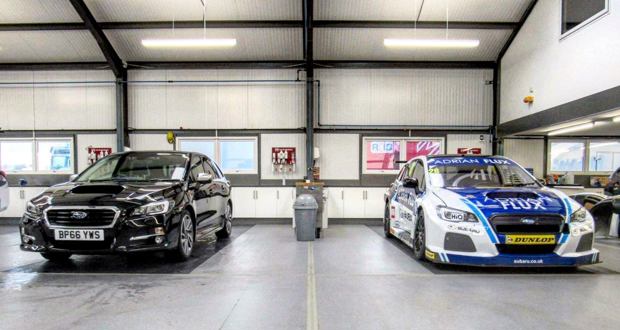
Date: 14 July 2017 | Current mileage 7953 | Claimed economy 39.8mpg | Actual economy 37.5mpg
When car manufacturers began their involvement in motor sports in the 1960s, the theory that justified huge investment in such programmes was 'win on Sunday, sell on Monday'. Basically, if potential customers could see certain cars, or cars powered by engines with familiar badges, gain success in motor sport, they would be more likely to think of them when making their next vehicle purchase.
Many use the same mantra today, and one of the series that appears most relatable to the cars most people actually buy is the British Touring Car Championship. The Subaru Levorg has been competing in it since the car's launch in spring 2016. The Levorgs have picked up a few wins and podiums already this year, but although it looks like our test car is doing rather well, the racing versions are quite different from the one we've been running for the last few months.
Cars competing in the BTCC are engineered to a formula and share many parts in common to help keep the cost of competing manageable as well as ensuring close and exciting racing. It means the Adrian Flux Subaru Racing BTCC Levorgs, run by BMR Racing, have more in common with the Honda Civics and Toyota Avensises that compete in the championship than it does with our test car.
The turbo, wastegate, intercoolers, ECU (engine control unit), instrumentation and dash, power management system, six-speed sequential gearbox, fuel tanks, differential, subframe, steering, brakes, clutch, wheels, dampers and suspension are all common components among cars in the championship, while teams have the option of using a default unbranded engine or developing one of their own to the regulations. All are 2.0-litre turbocharged engines, developing around 350PS and 400Nm of torque.
Despite sharing a body shell, the road-going and BTCC Levorgs have surprigingly little in common
That's somewhat pokier than our turbocharged 1.6-litre test car, although with decades of experience in rallying, Subaru does know how to inject driver engagement into a car's chassis. The Levorg is no exception, and with the 1.6-litre 'boxer' engine mounted low in the engine bay, the car feels as responsive as pretty much any other in this class.
As well as fairly sharp steering, the Levorg's firm suspension also improves stability when cornering. But in the Levorg, this also translates into a less than perfect ride quality on poor roads. One of the roads I use daily to connect my remote house with civilisation is dead straight, but relentlessly undulating with ripples and dips.
The speed limit on the road is 60mph, but as soon as the Levorg reaches around 45mph it begins to feel skittish with one or more wheels momentarily losing contact with the road. This is about the lowest speed I've noticed this happen on most of the test cars I've had, and no doubt the Levorg was engineered for Europe on far better quality surfaces than in many of eastern England's fens.
So the Levorg is a car with some appeal for driving enthusiasts, although with a petrol-only, 4WD-only, auto-only, estate-only model and the limited demand for that niche, perhaps people won't associate winning races on a Sunday with high-performance on the road. But it would certainly have an effect on the way they perceive the Levorg's attitude, and in a sector where too many models are perceived as a but dull, that can only be a good thing.
Transmission impossible
Does the fact that the auto-only Levorg comes with a particular type of gearbox harm its appeal? Auto-loving Simon thinks not.
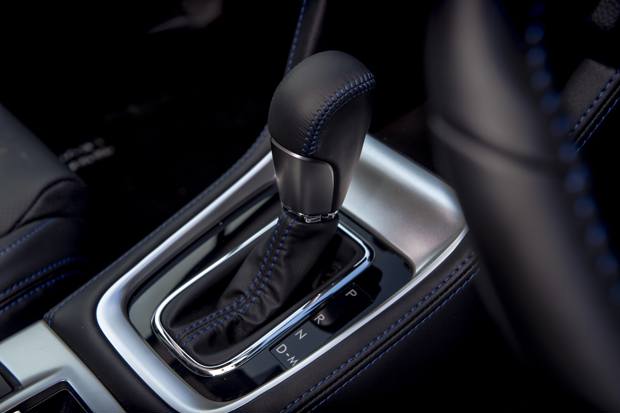
Date: 27 July 2017 | Current mileage 8553 | Claimed economy 39.8mpg | Actual economy 36.6mpg
There are numerous recent surveys that point to the UK as being a nation of complainers. We seem to have learned from our friends in the US that blame and complain is acceptable and it has overshadowed our traditional British reserve.
But this was always evident to me on media launches for cars when the automatic gearbox option was a continuously variable transmission. The UK journalists would - and still do - complain bitterly and incessantly at the PR representatives, saying the nature of the gearbox made the car awful to drive.
Continuously variable transmissions have no gears as such, as they involve a steel chain and pulleys. However, they operate very efficiently and are cheaper to produce than a traditional automatic gearbox. They allow the engine to run at its most efficient speed for a range of output speeds and, when more power is needed, the engine is immediately able to run at the speed that produces most power.
It means that when you give the car full throttle while driving, the engine speed increases instantaneously to high revs per minute, unlike a conventional manual or automatic when engine speed in each gear more or less matches the car's velocity. So when accelerating hard, in a CVT the engine spins to high revs initially to allow the car to gain speed more efficiently
The Levorg's performance isn't hampered by the automatic transmission
If journalists on launches drove like typical owners who had put their hard-earned cash into their vehicles, perhaps they wouldn't demand maximum acceleration from the car when pulling away from a standstill, and in turn wouldn't subject themselves to higher initial engine rpm and higher noise as well as a counter-intuitive engine running pattern. Car owners don't seem anywhere near as concerned by these characteristics.
However, it seems the gearbox boffins at Subaru have become wise to this. The Levorg's Lineartronic transmission is a CVT, but it behaves more like a conventional automatic under hard acceleration, with a torque converter - present in most other automatic transmissions - and 'steps' programmed in to its behaviour. It actually manages to combine most of the smoothness of a CVT transmission with some of the feel of a normal automatic.
And as the engine is turbocharged, when accelerating it's easy to keep the engine on song and build speed rapidly. According to Subaru's figures, 0-62mph comes up in just under nine seconds, which seems realistic, while acceleration on the move feels equally strong for a 170PS car.
While I'm in the minority of automotive journalists when it comes to my transmission preference - choosing almost any automatic gearbox over a manual where possible - the Subaru Lineartronic blends smoothness with sportiness in a way that's been absent from CVTs in the past.
Economy usurped by intelligence
Want to avoid the stigma of driving in 'economy' mode? Simon finds you can in the Subaru Levorg.
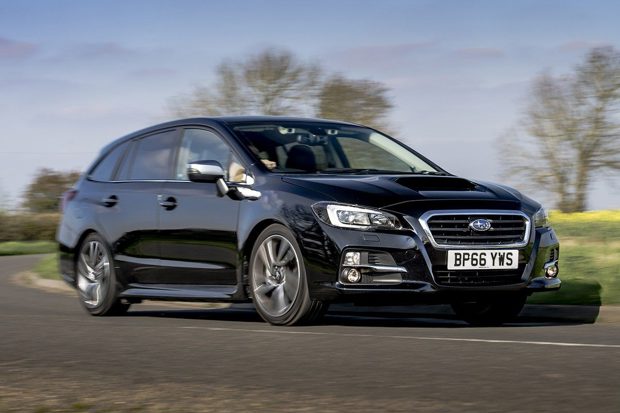
Date: 10 August 2017 | Current mileage 8871 | Claimed economy 39.8mpg | Actual economy 36.0mpg
What self-respecting driver would select an ‘economy’ mode when going about their business? Many cars have them, and generally they increase the amount of pressure required on the accelerator pedal to build speed compared with running in the standard mode of the car.
Cars often have ‘sport’ modes, too, which create a livelier throttle response by reducing the level of input required from the accelerator pedal, and also sometimes by reducing the resistance in the power steering system to artificially create some sense of ‘feel’ that driving enthusiasts (and many car magazines) crave.
There’s no stigma attached to driving in ‘sport’ mode. It suggests the driver can handle all of the 110 diesel horses ready to be unleashed in the lower-medium estate car their company has leased for them. An economy or ‘eco’ mode suggests tight-fistedness on the part of the driver, or if in a company car, that the employer takes a dim view of the employee’s usual driving behaviour.
Subaru’s solution is to imply an increase in the driver’s IQ from driving in a more measured way. The Levorg features SI Drive, which stands for Subaru Intelligent Drive. The driver has a choice of ‘S’ or ‘I’ modes, selected via steering wheel buttons. And, of course, it has far more power than the diesel repmobile I alluded to above, with 170PS and a petrol engine.
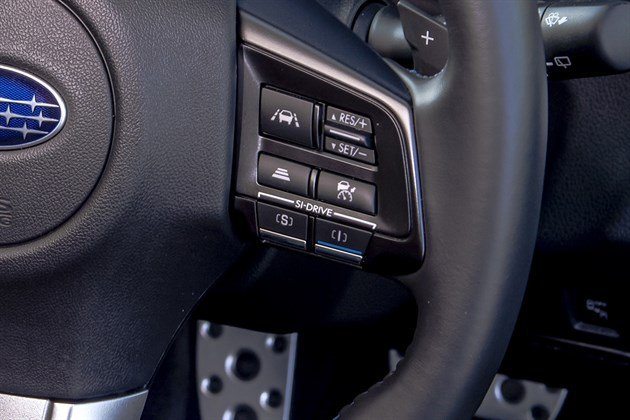
The SI-drive buttons are in easy reach
Basically, SI Drive offers two different throttle maps, with the default choice being ‘Intelligent’. I didn’t feel the need to use ‘Sport’ mode too often. Occasionally I’d push the button for some extra boost in an overtaking manoeuvre, but most of the time was happy to drive ‘intelligently’, with which performance was more than adequate.
It always feels capable of the claimed 0-62mph time of 8.9 seconds, and picks up speed briskly when you need it to. But being intelligent is certainly paying dividends in fuel consumption, which is pretty easy to keep above 36mpg in everyday driving.
I imagine that the Levorg would be more entertaining with Sport mode engaged all the time, with its deft handling and responses making it an enjoyable car to hustle along twisty B-roads. While the 'boxer' engine provides a low centre of gravity, the car also benefits from technology that applies the brakes to the inside wheel when cornering and provides extra torque to the outside wheel, reducing 'understeer' - where a car resists turning into a corner and runs wide.
The Levorg's chassis has intelligence beyond the name given to the default driving mode, and is one of the most enjoyable cars to drive in this sector.
Tech-lovers' paradise
The Levorg has a huge amount of technology as standard. But Simon finds not all of it is as welcome as it is useful.
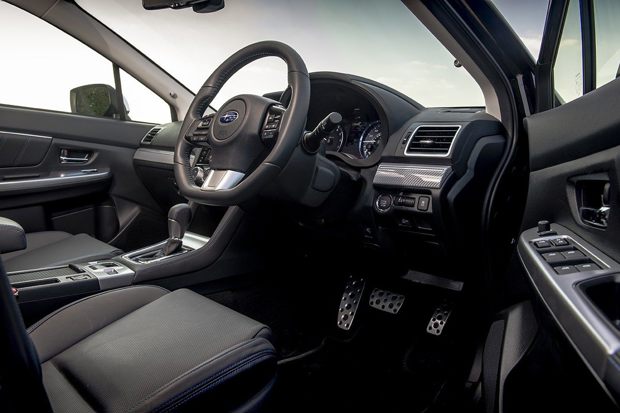
Date: 22 August 2017 | Current mileage 9029 | Claimed economy 39.8mpg | Actual economy 37.5mpg
Our Levorg is packed with clever technology, and all of it is fitted as standard. But not all of it is welcome, especially those features that nag you into driving better. A feature I disabled within a few miles behind the wheel is the lane departure warning.
Although the Levorg has to be travelling at some speed for it to work, it chimes in even for minor transgressions. Using the indicators stops it from kicking in - but indicating to barely cross the central line in the road would have seemed very odd to other road users - so the chiming became an unnecessary distraction in the cabin.
However, the collision warning system and autonomous emergency braking, triggered by stereo cameras in the top of the windscreen, are very useful. They detect slower or stopped vehicles in front that pose a collision risk and prompt the driver to slow down before applying the brakes automatically as a last resort, and they also detect pedestrians or cyclists in the road too.
Another feature the dual camera system provides helps when stopped in traffic. If you’re distracted by fiddling with the audio system or navigation, it detects when the vehicle in front has moved forward and alerts the driver with a discreet beep and a message in the instrument display. This is a welcome feature.
![]()
Don't get too near those white lines...
The Levorg’s lane-keeping assistance system is rather non-interventionist compared with some others. I’ve driven cars where the systems strive to keep the vehicle in the centre of the lane, while the Levorg’s, when activated, only corrects the trajectory when the car approaches the road markings. And, of course, your hands have to remain on the wheel or the system is disabled after a few seconds.
It’s perhaps a little disappointing that the Levorg’s main beam uses halogen bulbs when the dipped headlights are LED. The automatic headlamp dipping function works well enough, but the Subaru would feel like a much more sophisticated car if the main beam were also LED, or had some kind of matrix pattern that can keep main beam on while shielding vehicles ahead from glare.
Subaru's press information on the Levorg talks about four USB charging sockets, but there are actually five. There are two on the lower part of the dashboard, one of which is linked to the audio system as a music source.
There are two in the rear passenger compartment on the back of the front arm rest. These are great for ensuring teenage passengers keep their devices charged as they take selfies for Snapchat. The fifth one is hidden in the front armrest storage compartment, giving the ability to charge an extra device. While you can switch off some of the nagging safety features, the charging sockets ensure there's less nagging from the car's human occupants too.
Final chapter for enigmatic estate
After six months with the Subaru Levorg, are we any the wiser as to its purpose? Simon ponders its place in the automotive world.
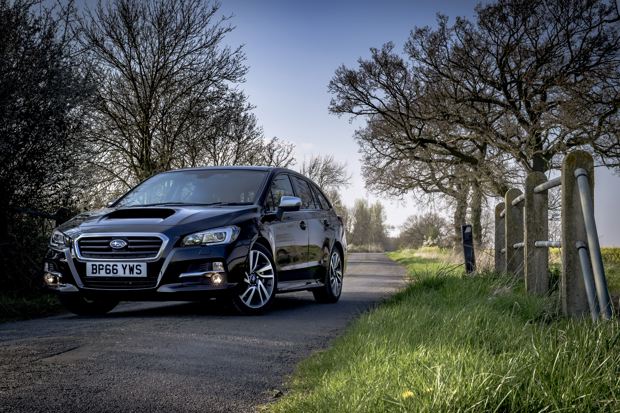
Date: 28 September 2017 | Current mileage 9861 | Claimed economy 39.8mpg | Actual economy 37.0mpg
You'd be hard pressed to find a direct rival for the Subaru Levorg, as Dan pointed out in one of the early updates, and we're no better off as it reaches the end of its time with us. We don't have many petrol-fuelled large estate cars on UK price lists if you look beyond high performance premium-badge cars.
The Levorg's auto-only transmission, middling 170PS power output and permanent all-wheel drive set it apart. Of its rivals, perhaps the Mazda6 Tourer is the closest. But in the UK, the 165PS petrol version is only available with a six-speed manual transmission, and of course only has front wheel drive.
Although the Mazda and the Subaru have something in common when it comes to how they make the driver feel, they achieve this is slightly different ways. The Levorg could still be a choice for driving enthusiasts, with direct steering, punchy turbo torque and superior traction in poor conditions. The Mazda has great pulling power for a normally aspirated engine, and more driving enthusiasts would prefer its manual gearbox.
Unfortunately, the Levorg's price premium over the Mazda and other similar cars would most likely question choosing it, unless you were a really big fan of four-wheel drive and automatic transmissions. Looks for a 4WD rival with automatic transmission among premium badge cars, and then the Levorg would appear good value.
The Levorg fills a niche for a particular type of driving enthusiast
But the fuel economy would still be a significant issue for many. Although Dan had previously struggled to reach 33mpg, and I later found that cose to 40mpg was possible with better road conditions, even as people are thinking very carefully before choosing many diesel cars, the Levorg competes in a sector dominated by fleet sales and diesel is still a firm favourite.
People typically choosing this type of car want to see them achieving 45-50mpg - which most large diesel estates are capable of - rather than 35mpg, and the CO2 emissions penalty over similar rivals, whether they're diesel or petrol, has an impact on everyday running costs. The first year VED rate for the Subaru, for example, is £500. Most rivals have significantly lower first year road tax.
Despite being a sensible and capable estate car, there are a few moments of joy when you drive it and it reminds you that it is a Subaru. When it feels like a Subaru - negotiating a series of challengine bends, or sounds like a Subaru when the 'boxer' engine is at full chat. But that really only appeals to Subaru owners.
To make a case as a family car alternative, it really does need to offer a compelling case on running costs. With its high price, the depreciation takes a hit. Servicing costs are expected to be higher than many rivals. And there's the fuel. It's a pity as the Levorg really grows on you. But there are so many better rational choices out there.
